Ranger Clifford Sunfly has just joined the exclusive night parrot club
Madison Snow and Ben
Collins
ABC Kimberley
Sat 27 Nov 2021
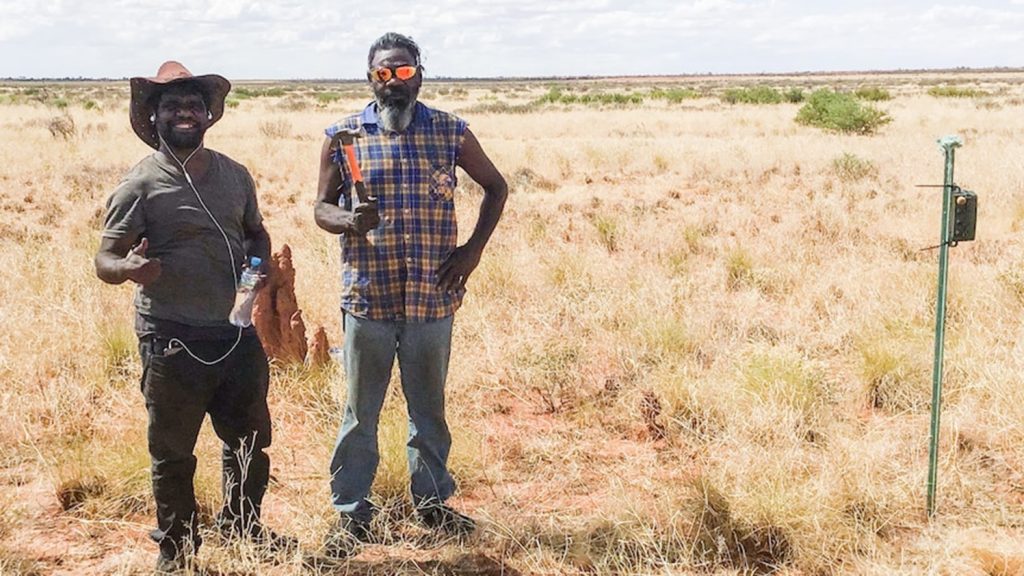
Rangers Clifford Sunfly and Samuel Galova installed automatic audio recording devices to detect night parrots.(Supplied: Ngururrpa Rangers)
Many people would consider Clifford Sunfly to be a lucky man, achieving in four years something others spend a lifetime searching for but never find.
Key points:
- Despite years of conservation work, Ngururrpa rangers had never heard nor seen a night parrot until recently
- The exact population and location of night parrots in Australia is unknown
- It is believed the Ngururrpa IPA may have the largest population
He recently became one of fewer than 20 people alive today to see the night parrot, considered to be one of the world’s most mysterious birds.
The night parrot was thought to be extinct for over 100 years until it was rediscovered in 2013, but its secretive nesting habits and nocturnal nature meant it was nearly impossible to find.
Mr Sunfly is a Ngururrpa ranger based in Balgo, an Aboriginal community in Western Australia’s eastern Kimberley region in the Great Sandy Desert.
On a recent research expedition, the rangers decided to span out around a nesting area they had identified by using song meters to record their calls.
“We waited out after sunset for an hour, just when the stars were coming out’ that’s when we heard the noise of the night parrot whistling,” Mr Sunfly said.
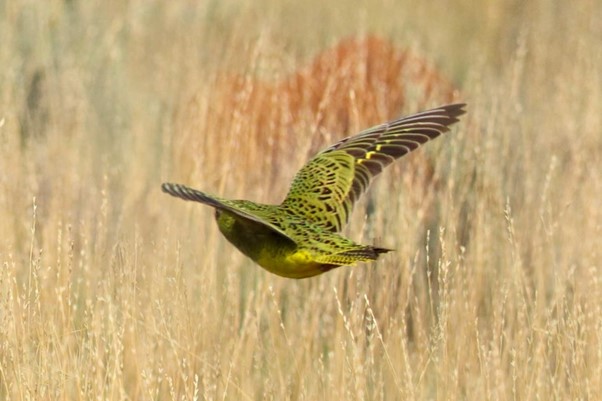
One of the first photographs of the night parrot after it was rediscovered in Broome in 2017. (Supplied: Bruce Greatwich)
On the second night, Mr Sunfly was sitting with his grandfather, Samuel Galova when the same thing happened.
“He was busy on the phone, and I told him to be quiet,” he said.
“We stood there for an hour, and I saw one flew across me.
“I was so happy to see it fly across me and listening to it calling out to its mate.”
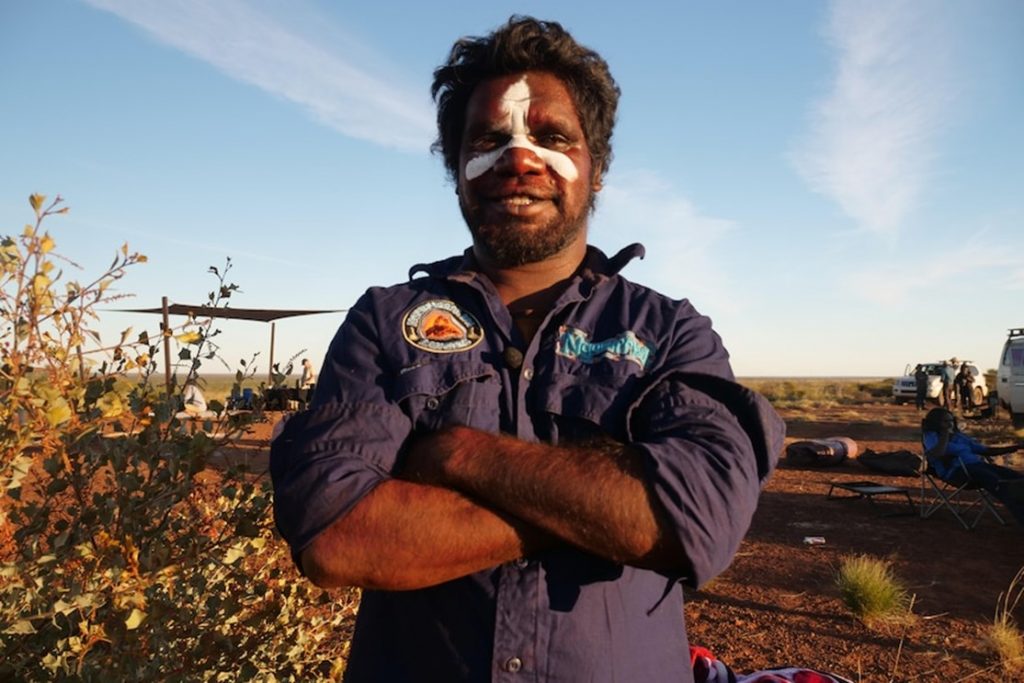
Mr Sunfly is one of fewer than 20 people alive to have seen the night parrot. (ABC Kimberley: Ted O’Connor)
Prior to this, Mr Sunfly had only heard the parrot through recordings captured with song meters.
“That’s when I first heard it with my own ears and I was so excited,” he said.
The curious bird landed in some cleared spinifex not far from Mr Sunfly, but the encounter did not last long as a series of unfortunate events unfolded, starting with his grandfather failing to look up from his phone.
“My grandfather coughed and scared it away and he doesn’t believe that I saw it fly across,” he said.
“We all had our plan to signal each other with our flashlights from our phones and I didn’t hear that part clearly, so I was waving my phone and bringing everyone close to me and they also scared it off.”
The next night, Mr Sunfly asked his grandfather to stay in the car so his persistent cough would not interfere with any potential encounters.
Ngururrpa Rangers Indigenous Protected Area (IPA) coordinator Angie Reid said Mr Galova played recordings of the night parrot on his phone while he was in the car, to elicit a response.
“He heard a bird calling from the patch nearby, we also heard more calls in the further patch that we were sitting and waiting at as well; so it was two for two,” she said.
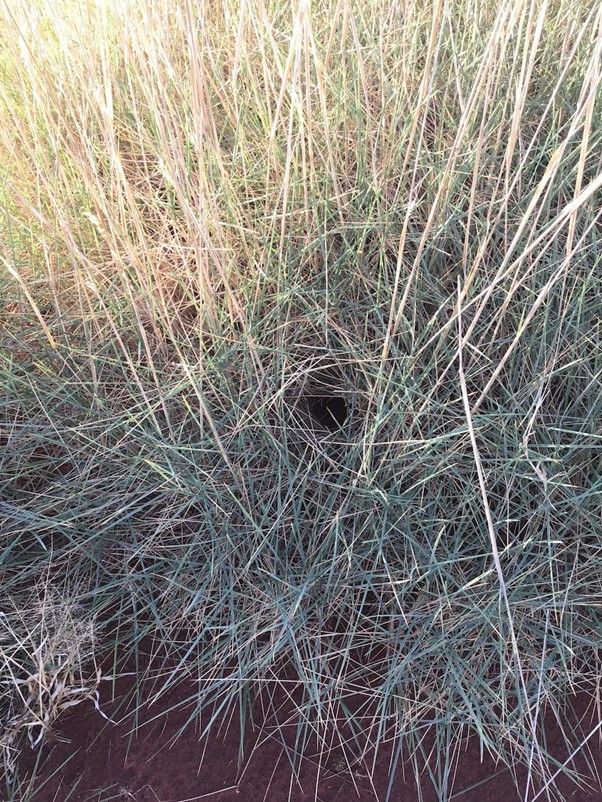
A possible night parrot tunnel found in the spinifex in the Great Sandy Desert by the Ngururrpa Rangers on a trip in November 2021.(Supplied: Parna Ngururrpa Aboriginal Corporation)
“Every night of the camp-out someone on the trip got to hear some night parrot calls, so it was incredible.”
Night parrot recordings were only released publicly in 2017 and prior to that only a handful of people had heard their calls.
The rare experience was not just a first for Mr Sunfly; none of the Ngururrpa rangers had previously heard the bird in person.
Ms Reid said while there were likely to be undiscovered populations of the night parrot across the country, the Ngururrpa IPA, spanning 30,000 square kilometres of the Great Sandy Desert, was a significant area.
“Based on the work that the Ngururrpa rangers have done so far, it’s possibly the largest population known of night parrots,” she said.
The bird is so elusive, its exact locations and numbers are not clear but Birdlife Australia national public affairs manager, Sean Dooley says its population is estimated at 250.
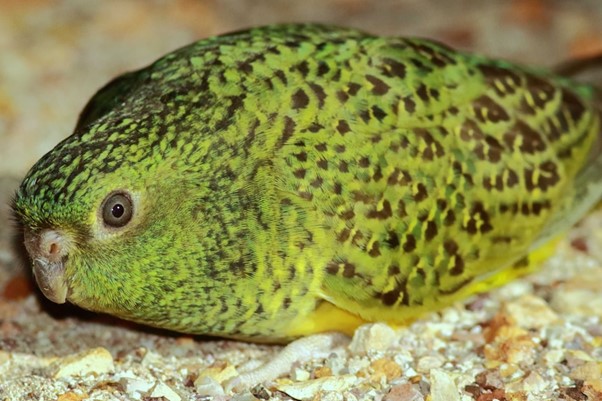
Adult night parrots are around 22 to 25 centimetres in size and are considered to be ground-dwelling birds, despite being able to fly.(Supplied: Steve Murphy)
“It could be as high as 500 or it could be as low as 100, but we certainly know that there’s vast areas that the birds are absent from,” Mr Dooley said.
“There’s a population in south-western Queensland where they were first rediscovered and the other six that we know of have all been found in Western Australia.”
While night parrots do fly, they spend a lot of time on the ground, opting to nest inside old growth spinifex hummocks.
Their unusual nesting habits make them vulnerable to introduced species like cats, who are attracted to the sound of babies calling out for their parents, and camels, who can trample nests.
“When we do find any nesting areas, we set up a camera to see if there are predators hanging around the areas and if there are, we could come back and get them out or execute them and keep the night parrots safe,” Mr Sunfly said.
Another key to slowing the decline of the critically endangered population is to protect them from bushfires, a major threat to the parrots who live in dangerously flammable spinifex.
“Hopefully we’ll get knowledge from the elders to go and burn certain areas and to do some fire breaks, so the fires don’t come out of the wild bushfire,” Mr Sunfly said.

The Ngururrpa rangers recently visited a location around 300 kilometres from Halls Creek in the Kimberley region, where song meters were installed.(Supplied: Parna Ngururrpa Aboriginal Corporation)
Mr Sunfly said while the rangers had located nests, they were yet to find any cracked shells to indicate breeding.
He said the next step for the Ngururrpa rangers was to locate more nesting sites in the hopes to determine how far night parrots travel in search of food and water.
It would also help determine whether the nests were used not just for breeding, but to take refuge from predators on their journey.